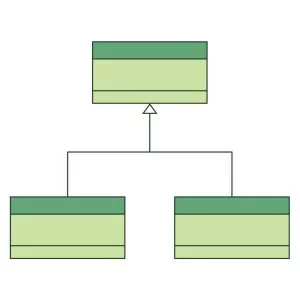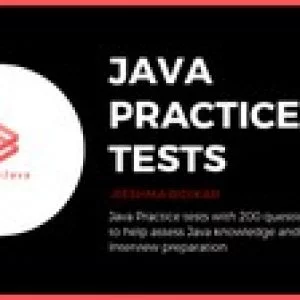
This course is about the basics of multithreading and concurrent programming with some parallel concepts. In the 21th century this topic is becoming more and more popular with the advent of Big Data and Machine Learning. We will consider the low level concepts such as threads, synchronization and locks. The second chapter will be about concurrent library: of course there are built in classes and interfaces that we can use when implementing multithreaded applications. Then we develope little programs as show–cases for multithreading: the dining–philosopher problem or the students in library simulation. Last chapter is about parallel computing and MapReduce.
Section 1:
theory behind multithreading
pros and cons of multithreading
Section 2:
multithreading basics
Runnable and Thread
join, volatile, synchronized, wait and notify
producer–consumer model
locks, semaphores and executors
Section 3:
concurrent collections
latch, cyclic barrier and blocking queues
delay queue, priority queue and concurrent maps
Section 4:
multithreaded examples
dining philosophers problem
library application
miner game
Section 5:
what is parallel computing
parallel merge sort
parallel algorithms
Section 6:
Fork–Join framework
maximum finding in parallel manner
Section 7:
what is MapReduce
MapReduce and Fork–Join framework
Thanks for joining my course, let’s get started!
Instructor Details
Courses : 24
Specification: Multithreading and Parallel Computing in Java
|
8 reviews for Multithreading and Parallel Computing in Java
Add a review Cancel reply
This site uses Akismet to reduce spam. Learn how your comment data is processed.

| Price | $11.99 |
|---|---|
| Provider | |
| Duration | 6.5 hours |
| Year | 2019 |
| Level | All |
| Language | English |
| Certificate | Yes |
| Quizzes | No |

$199.99 $11.99






Janos Stampf –
Gerat course with precise, easy to follow explanations. The practical examples/codes are also great, although some improvement of these examples would further elevate the course level. What I missed a bit: some coding challenges for the different chapters, step by step form easier to harder ones, that helps us learn and deepen these technics in practice.
Sidhartha Mallik –
find the explanations very nice
Pradeep Sekar –
Good content for all levels of java developers. If there was a chapter dedicated to evolution of multi threading in Java from 1.1 till date it would be very helpful to understand the problems/gaps in one version and how it was addressed in next versions. Still a good course for getting ones feet wet and build upon it.
Oleh –
After watching half the course, I already understood the essence of multithreading, the principle of its programming in Java. Interesting are examples of applications from real situations of different application areas. I would especially like to highlight programs that simulate different processes using multithreading. I hope the further part of the course will be no less interesting.
Paul Valle –
A great course on multi threading and parallel computing using Java, The examples are simple and concentrate on the topics at hand, the instructor makes it very easy to understand and the pace is just right.
Tanmay Dhar –
Lectures are awesome!!! But one has to practice in parallel to have a grip on the topics.
Evgenyi Gitomirskyi –
Dead lock is one of the main questions on the interview, it should be expained with a lot of examples. A lot of examples are given without explanations ( lock on this, lock on class). The lecturers speaks a little bit too fast. I feel like it will be hard to follow for a person without prior knowledge in multythreading.
Rakesh Kumar Narnolia –
nice